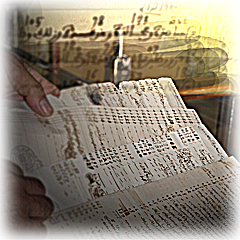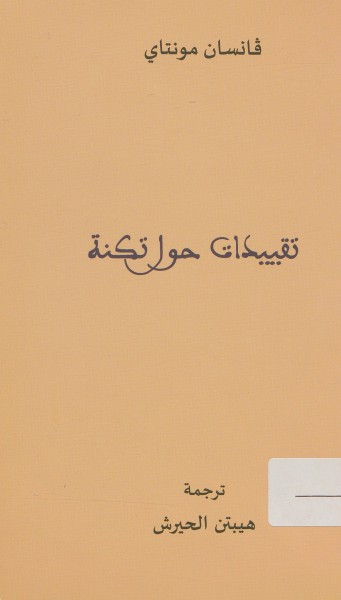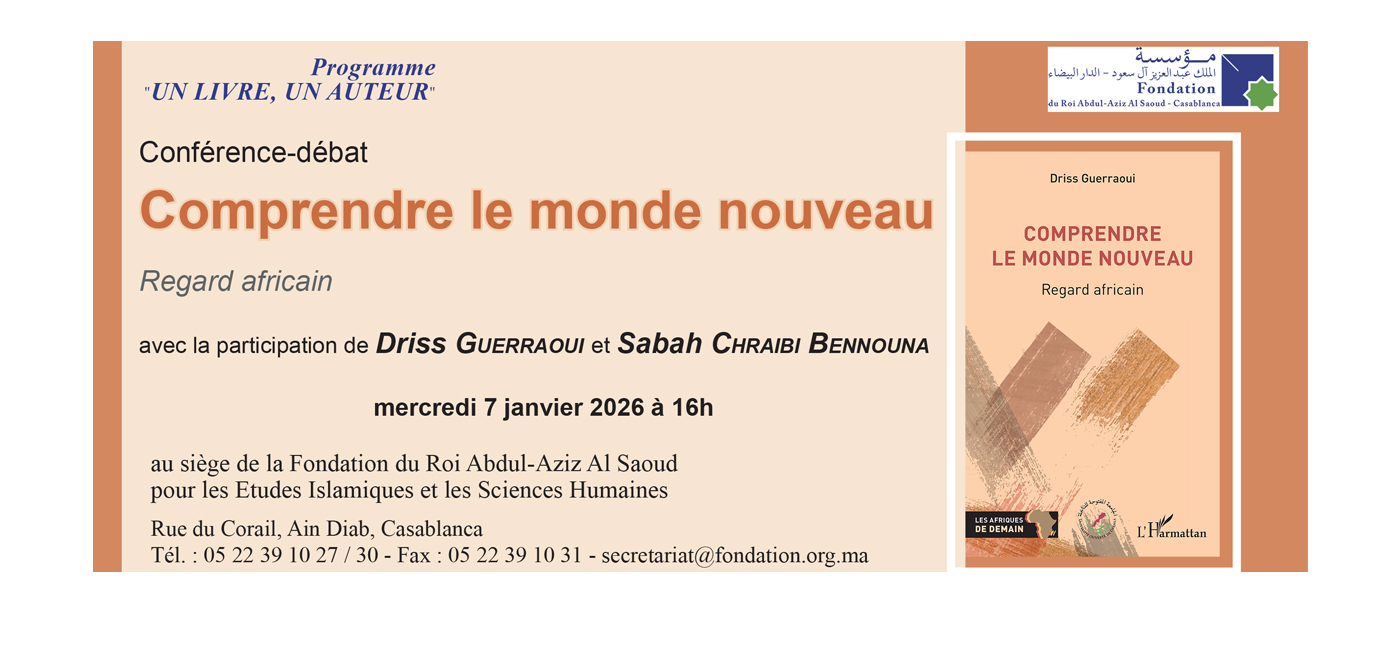Collections spéciales
Archives
 The documents of Serraj constitute the most important collection of archives available at the Foundation’s library. It comprises more than 15.000 documents informing on some social, political and economic aspects of the history of Fez at a particular period of the Moroccan history marked by a dynamics of transition. This collection makes it possible to have an idea of the Makhzenian system and its means of establishing control. It enables its readers to discover the system of Awqaf in Fez, in terms of resources as well as expenditure, in addition to the names of the inhabitants of Fez who used to pay Aăchar (taxes) to the Makhzen and give it presents. One can also find in this collection data regarding some aspects of litigation management in addition to individual or collective testimonials of support for obtaining a position at the administration or security in Dar al Makhzen. It equally provides pieces of information on the expenditures of some departments in the city of Fez, the names of hospitalized male and female patients, the names of fugitives among the inhabitants of Fez, the names of the unused mosques (28 mosques) and some data on the daily and monthly supply of meat, flour and bread delivered to Dar al Makhzen.
The documents of Serraj constitute the most important collection of archives available at the Foundation’s library. It comprises more than 15.000 documents informing on some social, political and economic aspects of the history of Fez at a particular period of the Moroccan history marked by a dynamics of transition. This collection makes it possible to have an idea of the Makhzenian system and its means of establishing control. It enables its readers to discover the system of Awqaf in Fez, in terms of resources as well as expenditure, in addition to the names of the inhabitants of Fez who used to pay Aăchar (taxes) to the Makhzen and give it presents. One can also find in this collection data regarding some aspects of litigation management in addition to individual or collective testimonials of support for obtaining a position at the administration or security in Dar al Makhzen. It equally provides pieces of information on the expenditures of some departments in the city of Fez, the names of hospitalized male and female patients, the names of fugitives among the inhabitants of Fez, the names of the unused mosques (28 mosques) and some data on the daily and monthly supply of meat, flour and bread delivered to Dar al Makhzen.
There is no wonder that the exploitation of this collection will contribute to a better historical understanding of the system of the Moroccan Makhzen in the 19th century and the roles played by certain Makhzenian families and particularly Serraj family.
The Foundation has recently purchased a collection of postcards dealing mainly with Morocco. This collection used to belong to Hassan Bouayyad, a collector from Casablanca who spent most of his life building up, conserving and classifying this collection, deploying passionately the necessary efforts of location, traveling, negotiation, etc. Bouayyad claims proudly: “this collection piled during 35 years and searched for with passion, love and diligence has been collected from all over the world by passionate collectors and specialists”.
A collection made up of around 8.388 documents
This collection consists of around 6.000 postcards and 2.000 photos. It is relatively homogeneous, in a good condition and concerns essentially Moroccan cities in the colonial period. There are even certain photos which go back to an anterior date. A postcard of the city of El Jadida (Mazagan), for instance, dates at 1899. However, almost all of the postcards and photos of the collection were published during the colonial period and bear the names of some renowned photographers of that time such as Flandrin, Greber, Dieulefils and others. The collection is roughly classified thematically in photograph albums. This classification was first conducted by geographical regions (cities, regions), then by districts. The value of these postcards is not restricted to their artistic and aesthetic dimension only. The postcard is also a rich source of information on Morocco in the colonial period. It is a snapshot that offers a range of visual information on the customs, handcraft, rituals and architecture, etc. of that time.
The Postcard as an Information Aid
The collection of postcards is also an aid which:
– conveys panoramic landscapes of a part of a city like Casablanca: districts, places of worship (mosques, churches), cultural and administrative buildings, the city center in particular (the "European city" formerly), the new Medina (districts of Habous and the “indigenous city” formerly), the town of Ain Chock in Casablanca which was meant for the reranking of slums population of Ben M’sik;
- immortalizes immediate views of a population through its customs and clothes of that time (especially 20s and 30s), its social and economic life (hammams, Bousbire district in Casablanca, the halqa and its storytellers, embroidery workshops, grocers, shoe-shine men, binders, weavers, traders of water, cereals, livestock, wood… rural souks, graveyards, etc.
– informs on the outset of the colonial military conquest in 1907 or on the statutes which used to decorate the urban spaces of the "European city", those of Maréchal Lyauté, Général Leclerc, etc.
– foregrounds the social representations of some photographers holders of oriental myths and utopias of colonial adventures which used to enrich the exotic imagination of the Europeans.
However, beyond this visible "historical and geographical truth", Hassan Bouayyad’s collection includes some "traveling" postcards as well, bearing some pieces of information written by the mailer in the verso of the postcards.


